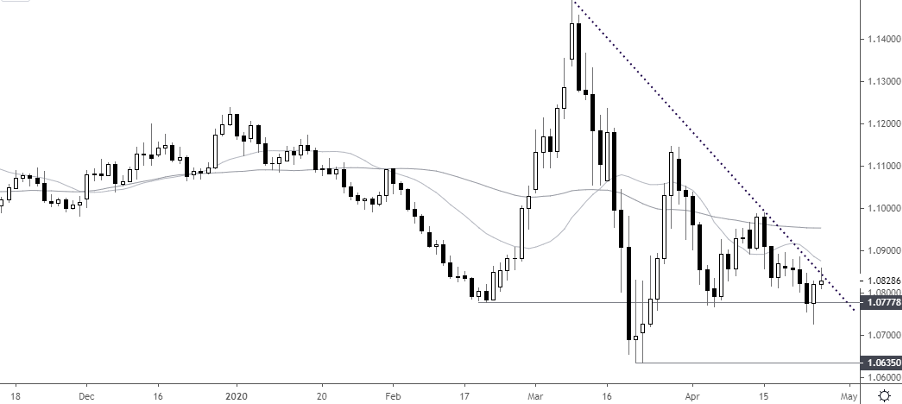ECB meeting preview - what's left in the toolbox?
After President Lagarde recently warned European politicians that the eurozone economy might contract by 15% this year, the failure to reach agreement on shared debt-raising through so-called ‘coronabonds’ has forced new pressure on the ECB to respond. Yet we have already seen an unprecedented plan of measures with the bank ramping up its QE programme with a further €750bn of bond-buying, known as the PEPP, and also a loosening of many of the restrictions previously governing such purchases. Most recently, and perhaps pointedly on the same day as last week’s summit, the ECB eased collateral restrictions for banks meaning it will now accept lower quality bonds.
The key question is whether that amount is enough given the ballooning government debt issuance that will be required to finance spending to contain the pandemic fallout. Analyst estimates calculate that at the current daily pace, bond buys will be exhausted by October so it is quite clear that extra firepower will be needed soon, even if it is not ready to be used up just yet. One thing to note is if the ECB does increase its purchases in Italian government bonds, spreads will lower but so will the pressure on EU politicians to develop their own support measures.
Going beyond ‘fallen angels’
The scale of that bond-buying may also be widened, like in the US, to include the purchase of riskier high-yield bonds. This makes sense, even allowing for a credit deterioration in their balance sheet, when one considers it would be trying to ensure as much of the corporate sector as possible survives (including potentially Italy’s bonds if the country gets downgraded going forward). However, major questions remain around whether it is the job of the ECB to bail out heavily indebted companies, as this goes somewhat beyond its inflation control mandate.
Other long-term options include buying exchange-traded funds, offering more attractive terms on its cheap multi-year bank loans (LTROs) and lifting the self-imposed issuer limits. Some form of yield curve control targeting long-dated bond yields may also be debated, especially given the divergence between the bloc’s bond benchmarks. But it seems that taking rates further into negative territory is not going to happen.
Strong signals
With President Lagarde gearing up for a large contraction in growth, the market will be focusing intently on how the ECB sees the recovery playing out. With European economies starting to ease lockdown measures, communication around this and the potential to expand the PEPP if needed will be crucial. Will the faux pas by the new President at the previous scheduled meeting, when she failed to address sovereign bond strains and spell out the ‘whatever it takes’ mantra, embolden her? Lagarde will have to balance the position between acting as the backstop and also cajoling governments to speed up negotiations on the Recovery Fund. That tug of war will need to include spending more to reboot the region’s economies, as the drop in demand can only be dealt with by European governments. For this meeting at least, with much talk of further, deeper measures, the bar seems quite low for Lagarde to disappoint.
EURUSD impact

EURUSD has been fairly uninspiring this month, stuck in a 1.0750/1.10 range while respecting the trendline from the March high just below 1.15. Friday posted a sharp rebound from its intraday trough at the bottom of the range, with short-term resistance now around 1.0880. While the near-term bias is titled to the downside, support lies below at the February lows at 1.0778, but we need a close below 1.0727 before seeing EUR weakness towards the March low of 1.0635.
Ready to trade?
It's quick and easy to get started. Apply in minutes with our simple application process.
The material provided here has not been prepared in accordance with legal requirements designed to promote the independence of investment research and as such is considered to be a marketing communication. Whilst it is not subject to any prohibition on dealing ahead of the dissemination of investment research we will not seek to take any advantage before providing it to our clients.
Pepperstone doesn’t represent that the material provided here is accurate, current or complete, and therefore shouldn’t be relied upon as such. The information, whether from a third party or not, isn’t to be considered as a recommendation; or an offer to buy or sell; or the solicitation of an offer to buy or sell any security, financial product or instrument; or to participate in any particular trading strategy. It does not take into account readers’ financial situation or investment objectives. We advise any readers of this content to seek their own advice. Without the approval of Pepperstone, reproduction or redistribution of this information isn’t permitted.